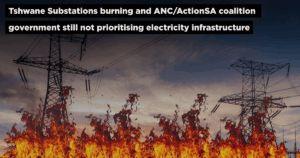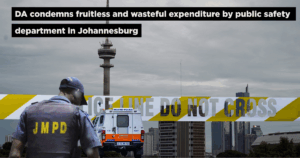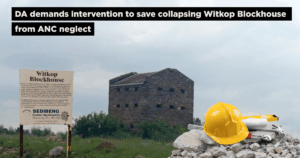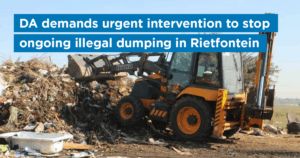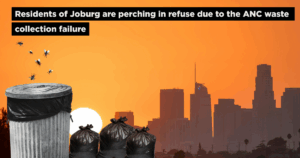Emergency ambulances respond to only 56% of calls for Priority 1 patients within 30 minutes in Gauteng’s urban areas, which means lives are lost that could have been saved.
These dismal figures are revealed by Gauteng Health and Wellness MEC Nomantu Nkomo-Ralehoko in a written response to my questions in the Gauteng Legislature.
Priority 1 cases are critically ill or injured patients who require urgent medical attention to save their lives.
According to the MEC, the worst response rate is in Ekurhuleni, where only 46% of life-threatening emergency calls are responded to within 30 minutes.
The response rate in other areas is as follows:
City of Johannesburg – 52%
City of Tshwane – 72%
Sedibeng District Municipality – 62%
West Rand District Municipality – 63%
The international standard is 80% of Priority 1 calls within 15 minutes, but the Gauteng Health Department no longer measures this high standard. They say they don’t collect this data “following revision and implementation of the 2020 National Indicators Data Set (NIDS)”, which changed the 2018 NIDS “P1 urban response under 15 minutes” to ”EMS P1 urban response under 60 minutes.”
In 2019, it was claimed that 82.6% of P1 calls were responded to in 15 minutes, but this deteriorated to 70% within 30 minutes in 2020, then rose to 94.6% in 2021 when calls were down due to Covid, but plummeted to 50% in 2022 and 2023.
But in a press statement issued this week the department claims it responds to 88% of calls under 30 minutes.
I do not trust this figure as it contradicts the information in the Health MEC’s official reply to my questions, as well as many stories of people who died while waiting for ambulances that did not arrive.
The department blames poor response times on service delivery protests in some areas, also hot zone areas where a police escort is needed, attacks on paramedics, and human resource shortages.
They say they are investing in smart technologies such as push-to-talk devices that have live tracking to emergency calls, and panic buttons and cameras in the emergency vehicles to mitigate against paramedic attacks that delay responses.
I agree with using new technology, but the reality is that Emergency Management Services (EMS) is plagued by mismanagement and corruption that needs to be fixed to speed up response times to emergency cases.
